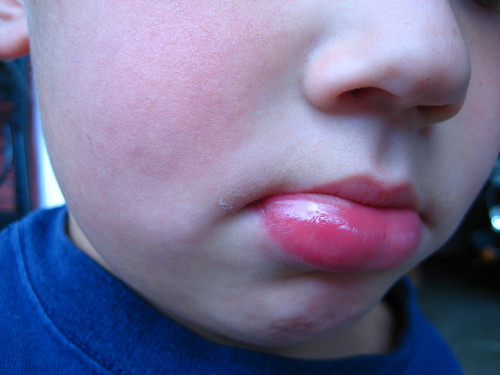Children with severe allergies are more at risk of developing a sudden and potentially fatal allergic reaction known as anaphylaxis. This reaction can be terrifying for parents and children because the child might experience difficulty breathing and fainting. If you want to protect your child from anaphylactic shock, you must first understand what it is, what causes it, and how to prevent it from happening.

What Is Anaphylaxis And Its Symptoms?
Anaphylaxis, also called anaphylactic shock, is a severe allergic reaction that can potentially be fatal. It is one of the most terrifying health emergencies any parent can go through. It occurs when a child’s immune system mistakenly reacts to a harmless substance or allergen as if it were a serious threat. When this occurs, the child’s immune system will release massive amounts of histamine and other kinds of chemicals that results to a host of symptoms- some of them are fatal. This causes him to go into anaphylactic shock.
The symptoms you should watch out for may include the following:
Skin: Hives; severe itching; inflammation of lips, tongue, and back of the throat; flushing; itching of lips and tongue; itching all over the body, redness, and swelling around the eye area; tearing of eyes.
Gastrointestinal: Stomach cramps; abdominal pain; vomiting; diarrhea; nausea.
Respiratory: Difficulty breathing and swallowing; itching and tightness of throat; change in voice; dry cough; runny nose; sneezing; wheezing; shortness of breath.
Cardiovascular: Low blood pressure; fainting; chest pain; abnormal heart rate
How common is anaphylaxis in children? Severe reactions in toddlers and young children are very rare. They are more likely to experience minor reactions, such as hives and tingling of the mouth and lips. Unfortunately, allergic reactions are very unpredictable, and some children who only have mild reactions in the past may suddenly experience more serious reaction if their allergic reaction is triggered once again.
Your child will be more at risk of going into anaphylactic shock if he has had a serious reaction in the past, or if he has asthma. But if your child only had one severe reaction, there is an 8% chance every year of it happening again. You should not immediately go into a panic since anaphylaxis is very rarely fatal in children.
How To Protect Your Child From Anaphylaxis?
To find out how you can protect your child from experiencing severe allergic reaction, you need to find out the most common triggers. Here are some of them:
- Food allergies: Foods that are high in protein, including milk, eggs, wheat, peanuts, and other nuts. Certain types of seafood can also trigger severe allergic reactions.
- Medication, such as penicillin
- Insect bites or stings, especially bees and yellow jackets
- Latex and other industrial products and substances.
The best way to prevent your child from going into anaphylactic shock is to avoid food and substances that cause serious allergic reactions. For instance, if your child is allergic to certain types of food, it is crucial to take the time to read the labels to see if it contains any ingredients that might trigger allergic reactions. When eating at restaurants or at friends’ or relatives’ house, ask whether the meal contains any ingredients that your child might be allergic to.
If your child is allergic to insect bites and stings, you should find safe outdoor areas. For instance, you can apply pest control solutions at home to make sure that your home is free from harmful insects and bugs. You can also apply insect repellent on your child’s skin; however, you need to make sure that the substances in the insect repellent are safe for children. In addition, you should also stay away from areas where bees usually build their nests as these insects are more likely to cause allergic reactions. If you find a bee hive in your backyard, ask a professional to handle the bee problem instead of going at it yourself.
If your child has had severe allergic reaction in the past, it is best if he wears a medical alert bracelet. This will alert healthcare providers to his condition. In addition, if an allergy specialist recommends an adrenaline injection, always keep it with you and give the injection right away if your child starts showing signs of allergic reaction.
Citations:
Featured images:
 License: Creative Commons image source
License: Creative Commons image source
This guest post is written by Kris Hopkins, a pediatric nurse and health blogger. She has treated young patients who have gone into anaphylactic shock; thus, she knows how terrifying it is for parents. She aims to raise awareness about this severe allergic reaction so that parents can immediately take action in case of an emergency. Some of her written works have also been featured at http://www.rovepestcontrol.com.

